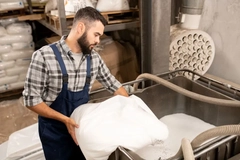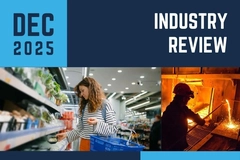MaterialsZone markets AI-guided tool to boost packaging R&D and sustainability
MaterialsZone, the material R&D platform, has launched a new AI-guided feature that can facilitate researchers’ experimentation processes and improve time effectiveness in packaging development.
“The AI-Guided Product Development feature provides real-time, AI-driven experiment suggestions. We’re tackling the inefficiencies of trial-and-error experimentation and the challenge of aligning development efforts with tight timelines. Traditional methods often rely on complex testing hypotheses, which can be inefficient and resource-intensive,” Ori Yudilevich, chief product officer at MaterialsZone, tells Packaging Insights.
“The AI learns as you go, narrowing down the experimental space and refining its recommendations with each iteration. It even factors in critical constraints like cost optimization and sustainability goals, such as reducing carbon footprints. This feedback helps researchers achieve their goals faster and with greater accuracy. It’s a smarter, more strategic approach to product development.”
No-code framework
MaterialsZone’s AI can learn from successful use cases and trial-and-error-based experimentation by providing real-time recommendations.
It considers critical material and process constraints, such as cost optimization and carbon footprint reduction.
“Our no-code framework removes the technical barriers that often come with advanced AI tools. Researchers and technicians don’t need to know how to code or have any background in AI to use it effectively,” says Yudilevich.
“Everything is built to be intuitive and user-friendly. Researchers can input their parameters, get AI-generated experiment suggestions and document their results — all within a simple interface. The AI takes care of the heavy lifting behind the scenes, analyzing the data and refining its recommendations in real-time.”
Yudilevich says that this empowers researchers to focus on their work and their goals without needing to rely on an external team or spend time learning new technical skills. “It’s all about giving them autonomy and making advanced AI accessible to everyone.”
 The AI feature provides real-time, experiment suggestions.An industry solution
The AI feature provides real-time, experiment suggestions.An industry solution
MaterialsZone’s AI solution is suitable for a wide of applications, including advanced materials, chemicals, FMCG, pharma and biotech.
“Generally, MaterialsZone’s users benefit significantly from our platform’s capabilities in optimizing R&D workflows, accelerating material discovery, and integrating cost, sustainability and regulatory considerations into development processes,” Yudilevich continues.
Discussing how the AI platform ensures alignment with goals such as cost optimization and carbon footprint reduction, he points to “its advanced AI-driven feedback loop.”
The AI feedback loop then narrows the parameter space, accelerating progress toward achieving product requirements and research goals.
“The system leverages a multi-target algorithm to minimize costs and carbon footprint, generating experiment recommendations, helping researchers balance these objectives with performance requirements, ensuring that every step of the development process aligns with broader business and sustainability goals,” he details.
“This approach accelerates innovation and supports more responsible and efficient R&D practices, helping companies stay competitive while meeting growing demands and regulations around sustainability.”
Next steps
Yudilevich says that MaterialsZone is continually advancing the AI platform to support R&D workflows better.
“Upcoming updates to our AI models will include expanded capabilities, such as integrating a broader range of sources for chemical properties, sustainability metrics and regulatory requirements.”
He highlights that such enhancement can make the models more effective while reducing product development timelines.
“Our roadmap is centered on driving innovation and addressing the evolving needs of materials-based industries, including packaging, to enable a better and faster R&D process,” Yudilevich concludes.











